11 Busiest Shipping Lanes In The World
International Shipping Lanes act as the life and blood of global maritime trade, facilitating the smooth movement of goods and services from one part of the world to another. Per IMO, approximately 90% of the world is dependent on the transportation of cargo via seaways.
Shipping lanes link manufacturing centres, producers and consumers. Hence, natural and man-made shipping routes are the most vital component of the maritime trade infrastructure.
Some shipping lanes are busier and more significant than the rest, primarily due to their strategic location and, consequently, the volume of trade they handle.
We will be discussing the top 10 busiest shipping lanes in the world in this article.
1. English Channel
Also called the Channel, this busiest shipping lane in the world is an arm of the Atlantic Ocean, which distinguishes Southern England from Northern France. It links the North Sea and the Atlantic Ocean, establishing a crucial link between the United Kingdom and Europe.
The English Channel measures 560 km lengthwise and has a width of 240 km at its broadest area to about 34 km at its narrowest in the Dover Strait. Another interesting fact is that it is the smallest of the shallow seas around Europe’s continental shelf, spanning approximately 75,000 square kilometres.
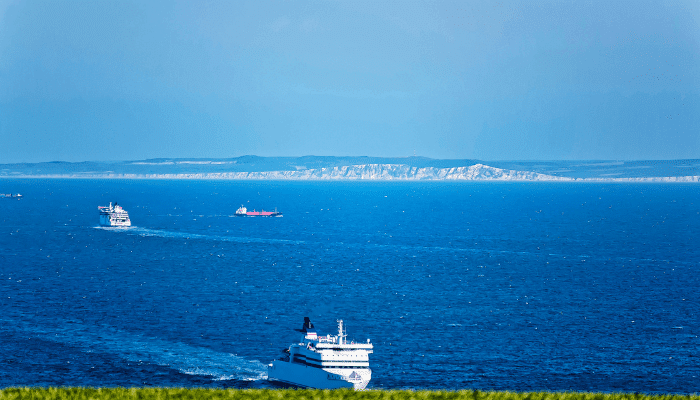
The Channel witnesses over 500 vessel transits a day. It has about 171 ports and harbours along its coast, which handle all kinds of cargo, ranging from food, fuel, manufactured items, and so on. Some important ports along the English Channel are Portsmouth, Southampton, Le Havre, Cherbourg and Brest. Additionally, more than 16 million people and 5 million trucks cross the Channel annually.
The English Channel has been an important route since historic times. It was a major factor behind the emergence of Britain as a naval superpower, which used it as a natural defence mechanism for dealing with invasions, like in the Napoleonic Wars and during World War II.
2. Malacca Strait
Lying between Indonesia’s Sumatra Island and the Malay Peninsula, this shipping lane connects the Andaman Sea with the Strait of Singapore and the South China Sea. It is narrow, just 500 km long and 65 to 250 km broad.
It is the principal shipping route between the Indian and the Pacific Ocean, connecting Asian economies like India, Indonesia, Malaysia, Singapore, Japan, Taiwan, South Korea and Thailand. Malacca Strait has been named after Phyllanthus emblica, or simply the Malaka tree, which grows in the coastal areas along the Strait.
There are over 40 ports along the Malacca Strait, and around 94,000 ships pass through this shipping lane each year. Around 25% of the globe’s traded goods, mainly oil, Chinese products, and Indonesian coffee, cross the Strait to reach markets far and wide.
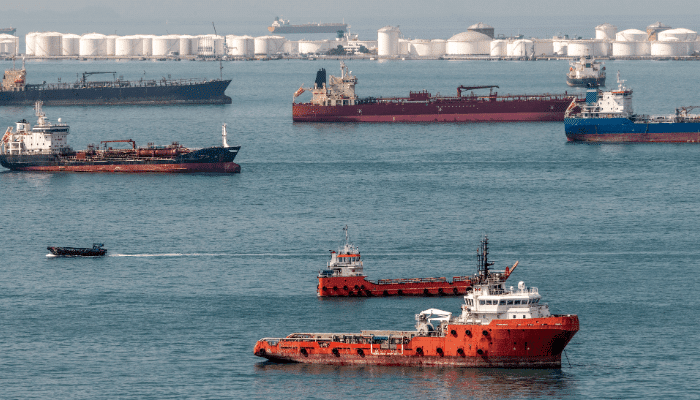
A major commodity that passes through this Strait is oil, from suppliers in the Persian Gulf to the markets in Asia. Congestion can happen due to many vessel crossings and its narrowness, which comes to only 1.5 nm at the Phillip Channel.
Piracy is a serious problem in the Strait, though such incidents have reduced significantly over the last few years. Navigation hazards pose another risk since the Strait has around 34 documented shipwrecks, some dating to the 1800s.
Wildfires in Sumatra cause haze, yet another navigational challenge. Seafarers are required to slow down their vessels in conditions of low visibility due to the haze.
3. Hormuz Strait
Situated between Iran and Oman, the Hormuz Strait is one of the busiest shipping lanes and also a vital maritime chokepoint. It is the main shipping lane for oil from the Middle East, with more than 21 million barrels passing through it every day.
The Strait witnessed more than 20,000 ship transits in 2020, which made it the world’s 3rd busiest shipping lane. Hormuz Strait is 167 km long and has a width varying from around 96 km to 39 km.
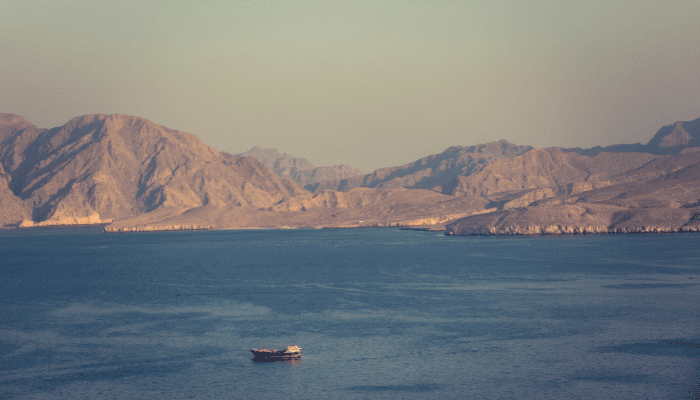
Around 25% of the world’s oil consumption and a third of its LNG passes through the Hormuz Strait, making it strategically important in world trade and geopolitics. It has remained important for centuries since its hinterlands were rich in luxury trade commodities, which lacked access to major trading ports.
To decrease the chances of a collision, vessels moving through the Hormuz Strait adhere to a Traffic Separation Scheme in which inbound ships utilise one lane, and outbound ones use another lane, each lane being 2 miles broad.
4. Suez Canal
The Suez Canal in Egypt connects the Mediterranean Sea with the Red Sea via the Isthmus of Suez. It also divides Africa and Asia.
When constructed, the Canal was 164 km lengthwise and had an 8 m depth. After many rounds of enlargements, it is now 193.3 km long, 24 m deep, and 205 m wide, and it is a crucial shipping route between Europe and Asia. Its northern access channel is 22 km long, and the southern access channel is 9 km long.
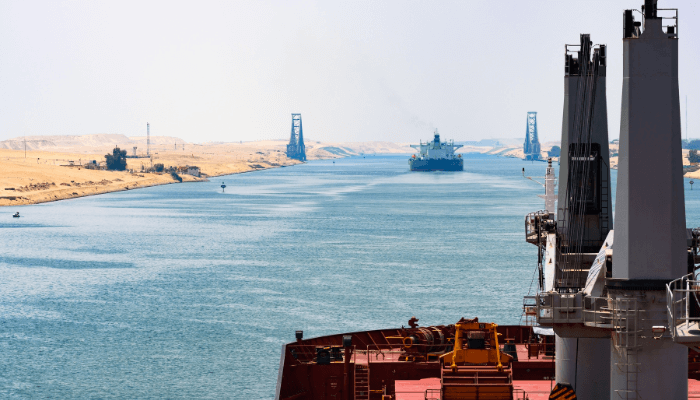
Ships with drafts of up to 20 m and a height of 68 m can cross the Canal under viable conditions. It can accommodate more traffic and bigger vessels than the Panama Canal. However, some supertankers are too big to cross it, and they can offload some of their cargo on a canal-owned ship to decrease their draft.
Around 56 ships cross the Suez Canal per day. The Canal set a new record with a revenue of $9.4 billion USD for the fiscal year that ended on 30 June 2023.
After its completion, the Canal proved extremely advantageous to the sea trading nations of the Mediterranean, with faster trade connections to the Near East and the Far East. Additionally, ports along or near the Suez Canal, such as the primary Habsburg port of Triests with direct links to Central Europe, also saw an increase in vessel and cargo traffic.
5. Panama Canal
Constructed from 1904 to 1914, this engineering marvel is 51 miles long and separates North America and South America. It also links the Atlantic Ocean with the Pacific Ocean, doing away with the lengthy voyage of two months around the tip of South America.
The canal locks allow lifting vessels up to the freshwater Gatun Lake, 26 m above sea level. Roughly 200,000,000 litres of freshwater is used in a single passing of a vessel.
The artificial lake was made by damming the Alajuela Lake and Chagres River to decrease the excavation word needed for the Canal and to lower the vessels at the other end easily.
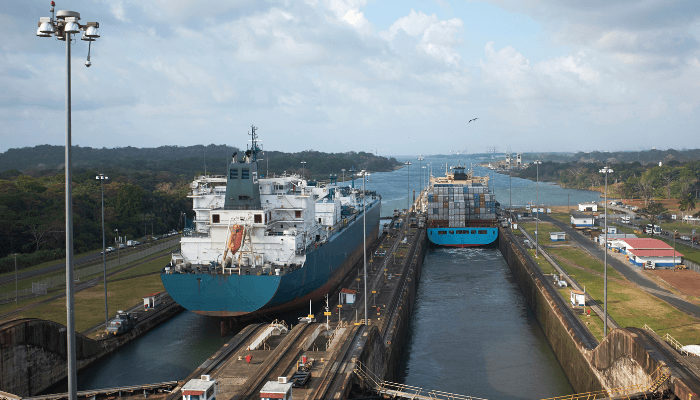
The Canal’s locks are 33.5 m wide, and another set of locks was built between 2007 and 2016. The waterway was expanded, and commercial operations began soon after. With the new locks, the bigger NeoPanamax vessels could also cross the Canal.
To increase capacity, several improvements were made, such as implementing an enhanced locks lighting system, enhancing the tugboat fleet, developing an improved vessel scheduling system, deepening Gatun Lake’s navigational channels, improving lock structures, etc.
Panama Canal has witnessed reduced daily crossings due to persistent drought conditions, which has limited daily crossings to 32.
6. Danish Strait
Danish Strait is the waterway that connects the Baltic Sea to the North Sea via Kattegat and Skagerrak. In the past, they were regarded as internal waters of Denmark, but after territorial defeats, Oresund and Fehmarn Belt are shared with Sweden and Germany. Great Belt and Little Belt are part of Denmark’s territorial waters.
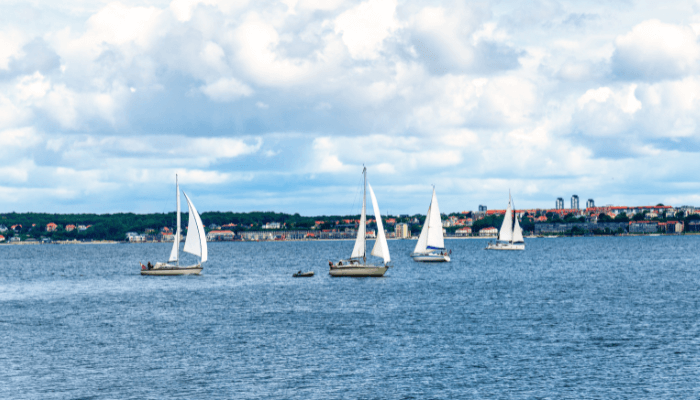
The series of channels that comprise the Danish Strait is a crucial route for Russian seaborne exports of oil to European nations. Around 3.2 million b/d of crude oil and petroleum products passed through the Danish Straits in 2016.
Danish Straits have always been regionally important waterways. The 1857 Copenhagen Convention opened these waterways to commercial shipping, regarding them as international waterways.
7. Bosphorus Strait
This natural Strait is an internationally significant channel in Turkey, connecting the Black Sea and the Marmara Sea, forming a continental border between Europe and Asia. It segregates Turkey into Anatolia and Thrace and is the narrowest Strait vital for international trade and transport.
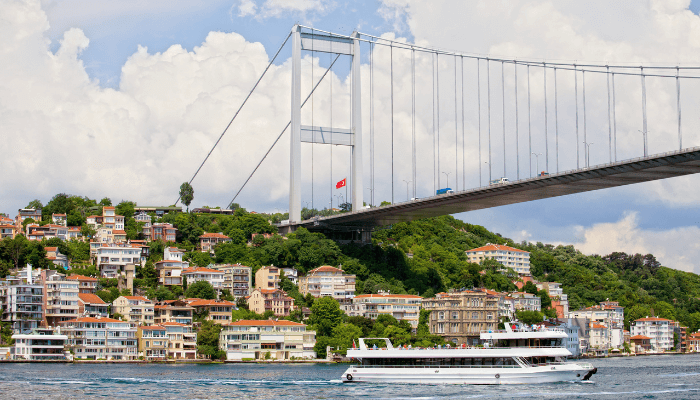
It has great economic and military importance, especially for Russia and Ukraine, as it is a major sea access route for them.
Around 55,000 ships pass through it annually. It is also known for its unique ecological conditions, rich fauna, and flora.
Several ports lie along its coast, which are also heavily populated.
8. Saint Lawrence Seaway
This strategic waterway enables smooth shipping operations in American and Canadian waters, especially in the upper regions of Canada. It serves small ports in the region and enables shipping cargo to the final destination rather than carrying loading activity at distant ports.
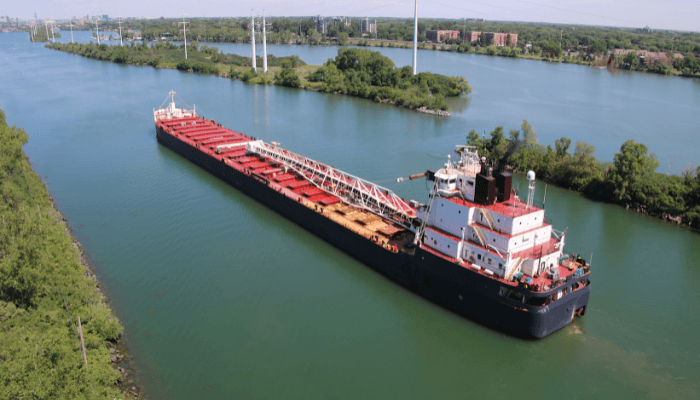
From Canada’s Lake Ontario, it foes 1900 miles to New York and serves ports like Ontario, Minnesota, Vermont, Wisconsin, Michigan, Ontario and Ohio.
It handles 40 to 50 million tonnes of cargo each year, which includes iron ore, liquid bulk, grains, breakbulk, dry bulk, etc. Transporting through this seaway saved 3.6 billion dollars in transportation costs. It is also a safer passage and has boosted trade between America and Canada.
9. Strait of Gibraltar
Linking the Atlantic Ocean and the Mediterranean Sea, the Gibraltar Strait is one of the busiest waterways, with approximately 300 ship crossings daily. It is 60 km long and 14 to 44 km wide.
Given the ocean currents here, there is sufficient food available here that attracts dolphins, whales and other fish. Whale Watching tours are popular in this Strait where one can see and observe these majestic creatures.
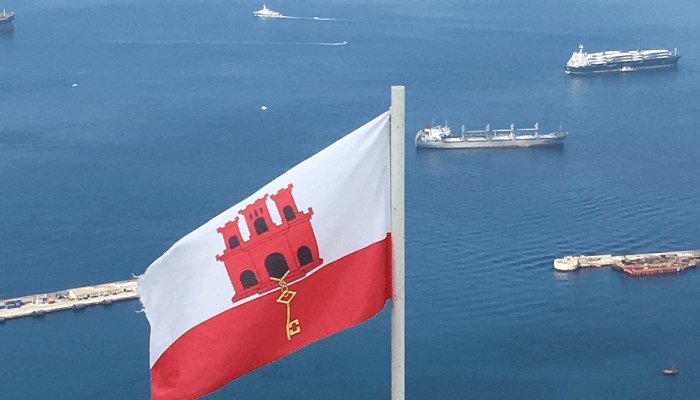
The narrowest point of the Gibraltar Strait lies off Tarifa; from the southernmost city of the European mainland, it is just 14 km to Mount Jbel Musa in Morocco. This is also why several migratory birds can be seen crossing this waterway on their way between Europe and Africa.
10. Taiwan Strait
This 180 km wide Strait, which separates Taiwan and the Asian Continent, is a part of the South China Sea and connects with the East China Sea. Taiwan Strait is a major shipping route since most of the container ships and around 88 per cent of the largest ships in the world pass through this waterway.
Though access to Taiwanese harbours and ports does not depend on passage through this Strait, entry to ports in Hong Kong and North China depends on it.
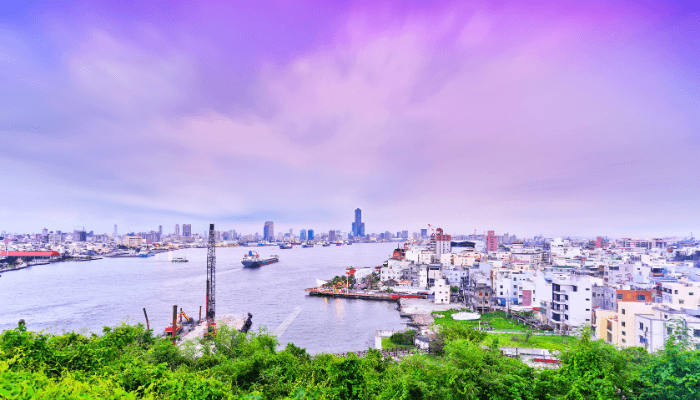
It is also important due to its proximity to China and Taiwan. The latter is the world’s most advanced semiconductor manufacturing hub.
The Strait lies on the continental shelf of Asia and has many islands like the Xiamen, Pingtan, Matsu, Kinmen, etc. The waterway has great potential, and Taiwan is constructing wind farms here.
11. Strait of Juan de Fuca
A vital maritime entryway to the Pacific Northwest, Juan de Fuca Strait witnessed more than 8000 transits of container vessels, oil tankers, container ships, and barges coming to and from Puget Sound and Canada.
Apart from shipping and trade, it also supports more than 200,000 crossings of Washington State Ferries and recreational vessels.
Situated north of the Olympic Peninsula, this Strait also creates the northwesternmost boundary between Canada and the U.S. On its American side, the area is home to 8 million people, with communities that have age-old ties to traditional fishing.
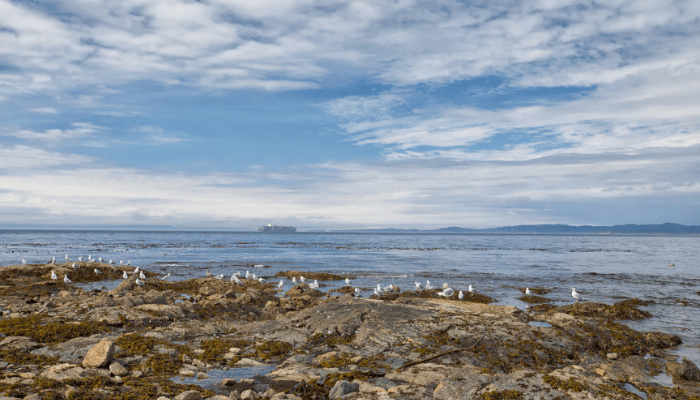
Most of the 3998 vessels that enter the Canadian waters pass through this Strait to enter the Salish Sea since these ships are bound for Vancouver or the ports of Seattle and Tacoma.
This Strait connects the Puget Sound and the Pacific Ocean and also functions as a channel for exchanging salty ocean water and freshwater runoff from rivers that drain into the Sound.
Conclusion
The busiest shipping lanes in the world are vital maritime gateways for international trade. They link economies and enable maritime transportation of goods and services to this interconnected world.
As outlined in the article, the Strait of Malacca, Suez Canal, and Panama Canal witness tremendous volumes of traffic while facilitating the movement of raw materials, electronics, commodities, finished items, etc.
Their importance goes beyond commercial interest, impacting the environment, geopolitics and safety of ships. These routes influence international policies and relations since countries try to control these strategic areas.
As international maritime trade continues to grow, these shipping lanes will remain indispensable routes of trade and commerce.
You might also like to read-
- The Strait Of Dover • The Busiest Shipping Route In The World
- 7 Important Shipping Routes Vulnerable To Maritime Piracy
- 10 Things About Malacca Strait You Might Not Know
- 10 Major Ports In The Baltic Sea
- Top 14 Major Ports in Italy
Disclaimer :
The information contained in this website is for general information purposes only. While we endeavour to keep the information up to date and correct, we make no representations or warranties of any kind, express or implied, about the completeness, accuracy, reliability, suitability or availability with respect to the website or the information, products, services, or related graphics contained on the website for any purpose. Any reliance you place on such information is therefore strictly at your own risk.
In no event will we be liable for any loss or damage including without limitation, indirect or consequential loss or damage, or any loss or damage whatsoever arising from loss of data or profits arising out of, or in connection with, the use of this website.
Do you have info to share with us ? Suggest a correction
Disclaimer :
The information contained in this website is for general information purposes only. While we endeavour to keep the information up to date and correct, we make no representations or warranties of any kind, express or implied, about the completeness, accuracy, reliability, suitability or availability with respect to the website or the information, products, services, or related graphics contained on the website for any purpose. Any reliance you place on such information is therefore strictly at your own risk.
In no event will we be liable for any loss or damage including without limitation, indirect or consequential loss or damage, or any loss or damage whatsoever arising from loss of data or profits arising out of, or in connection with, the use of this website.

About Author
Zahra is an alumna of Miranda House, University of Delhi. She is an avid writer, possessing immaculate research and editing skills. Author of several academic papers, she has also worked as a freelance writer, producing many technical, creative and marketing pieces. A true aesthete at heart, she loves books a little more than anything else.
Latest Maritime Knowledge Articles You Would Like:
Subscribe To Our Newsletters
By subscribing, you agree to our Privacy Policy and may receive occasional deal communications; you can unsubscribe anytime.















